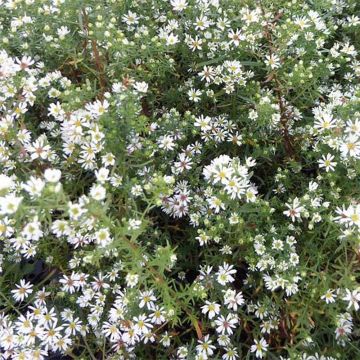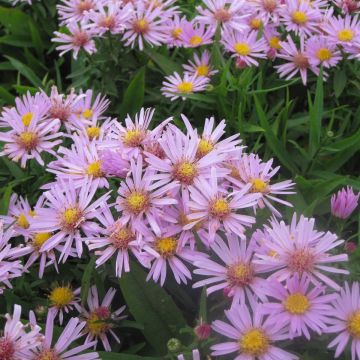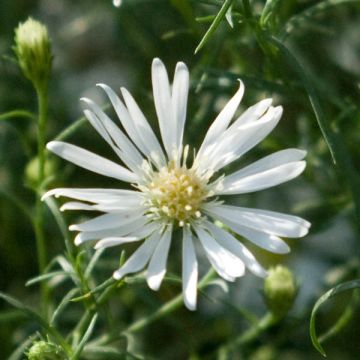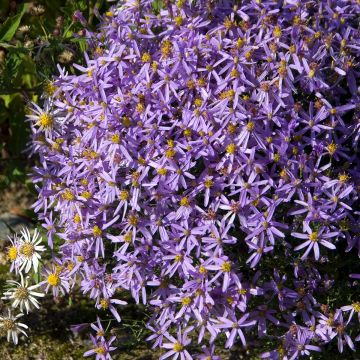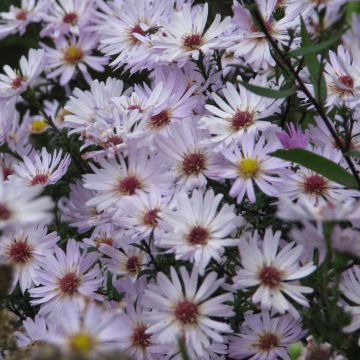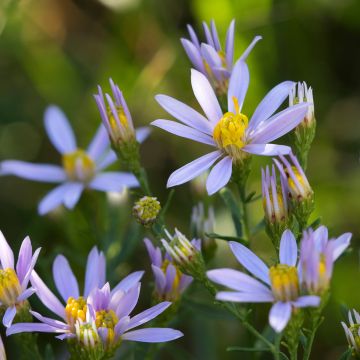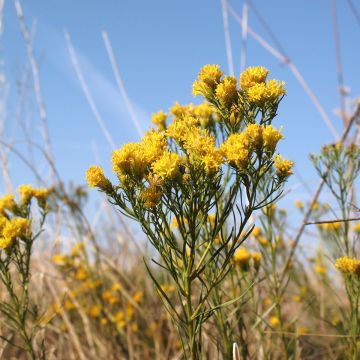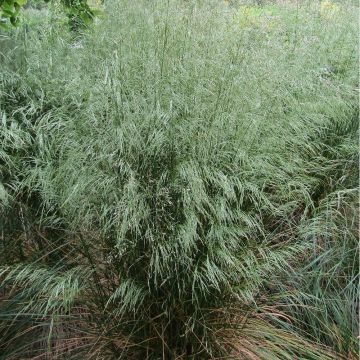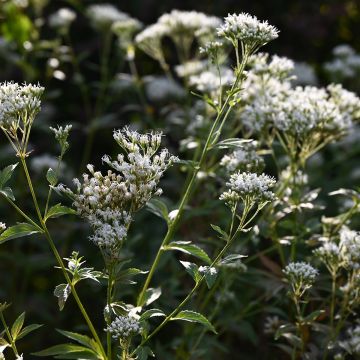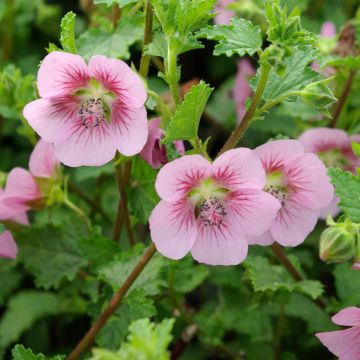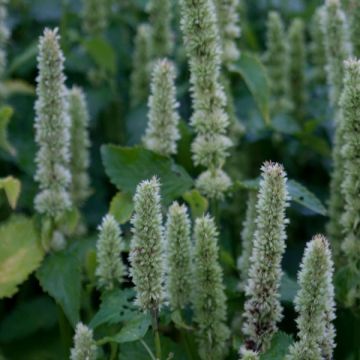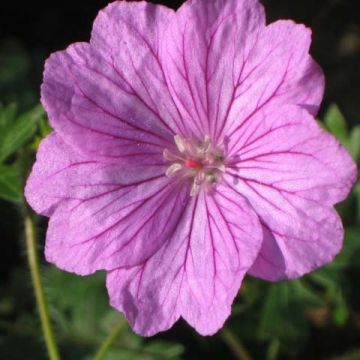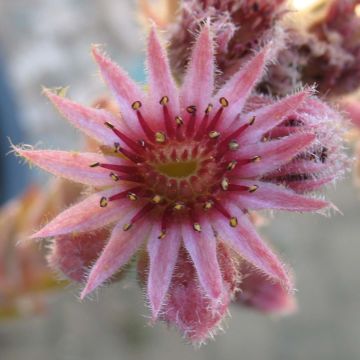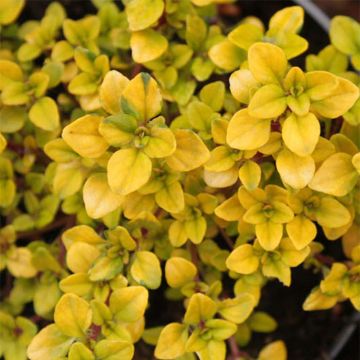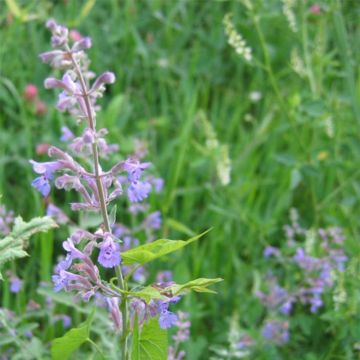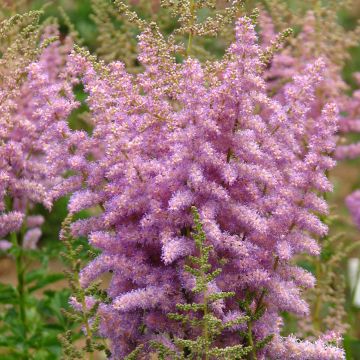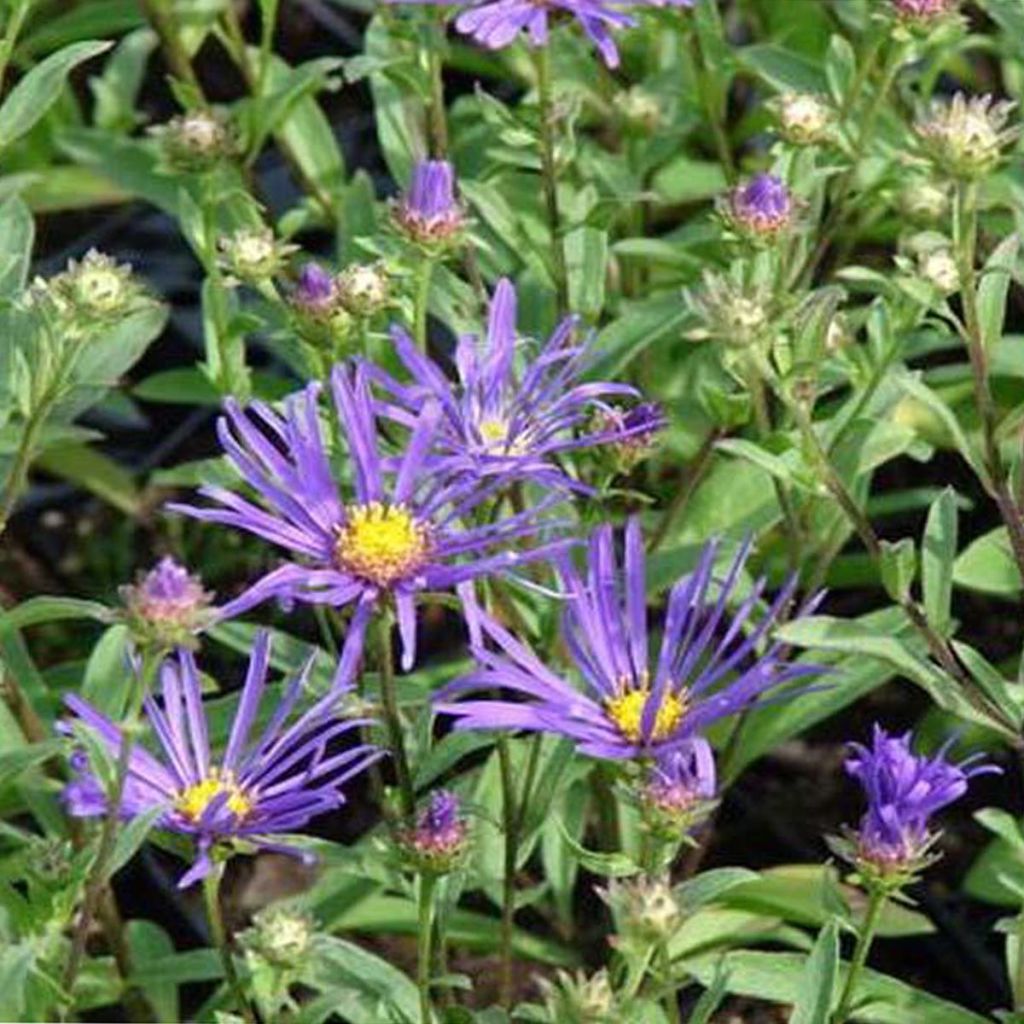

Aster amellus Veilchenkönigin - Violet Queen
Aster amellus Veilchenkönigin - Violet Queen
Aster amellus Veilchenkönigin - Violet Queen
Italian Aster, European Michaelmas Daisy
Very beautiful young plant that has thrived very well. It has flowered for a very long time.
Sandra, 21/10/2021
This item cannot be shipped to the selected country
Delivery charge from €5.90
More information
Schedule delivery date,
and select date in basket
This plant carries a 12 months recovery warranty
More information
We guarantee the quality of our plants for a full growing cycle, and will replace at our expense any plant that fails to recover under normal climatic and planting conditions.
From €5.90 for pickup delivery and €6.90 for home delivery
Express home delivery from €8.90.
Does this plant fit my garden?
Set up your Plantfit profile →
Description
Aster amellus 'Veilchenkönigin' is a compact and bushy intermediate-sized variety with a particularly long flowering period from mid-summer until the first frost. It easily bridges the gap between summer blooms and autumn colours. It is a hardy and easy-to-grow perennial that is covered in purple star-shaped flowers. This perennial tolerates poor and chalky soil, as long as it remains moist.
Aster amellus belongs to the Asteraceae family. This perennial exhibits a compact and branching upright habit starting from spring. It will reach a height of 50cm (20in) when in bloom, and will spread over 50cm (20in) or more, with a fairly rapid growth rate. The basal leaves are slightly pubescent, lanceolate, and green in colour. Along the stem, the leaves are sessile (without petioles) and acute. This plant spreads through underground woody rhizomes. The 'Veilchenkönigin' variety bears abundant flowering that lasts from July to October or even into October, only ending with the first frost. The flowerheads display a beautiful deep amethyst violet colour, while the centre is yellow-orange, providing a sunny touch to this particularly charming flowering. These are very beautiful cut flowers.
It is impossible to imagine our gardens without asters. Not demanding, they blend well with all kinds of perennials. The colours of this variety would perfectly complement yellow or orange blooms, or you can choose to integrate them into a range of blues to purples. Also consider grasses that will accompany the asters until the end of autumn. The relatively modest size of Aster amellus allows you to incorporate them into your flower pots compositions.
Report an error about the product description
Aster amellus Veilchenkönigin - Violet Queen in pictures
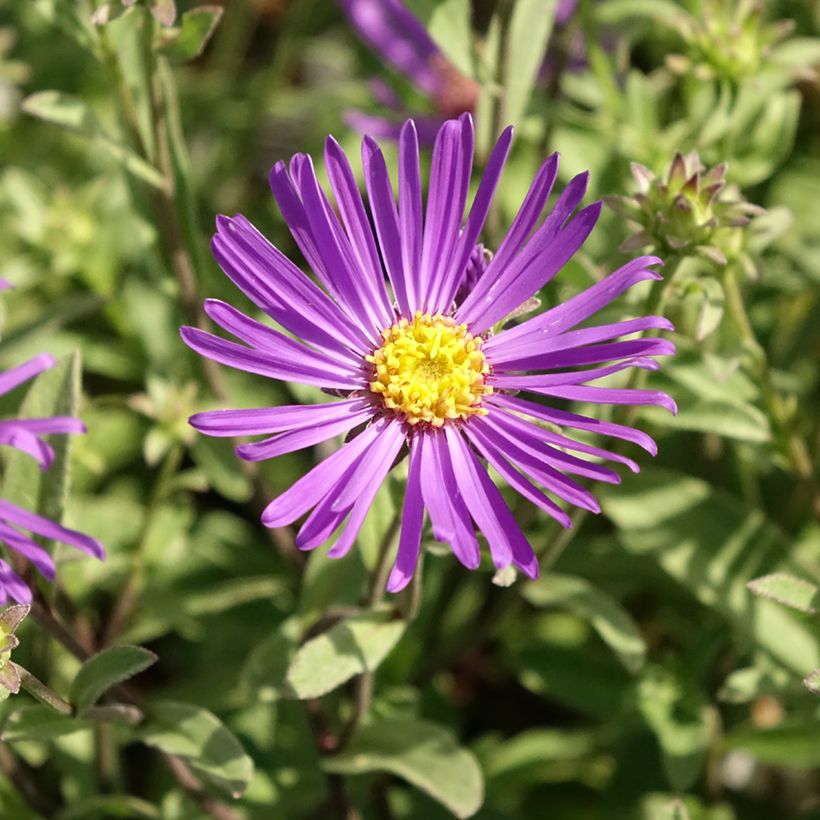

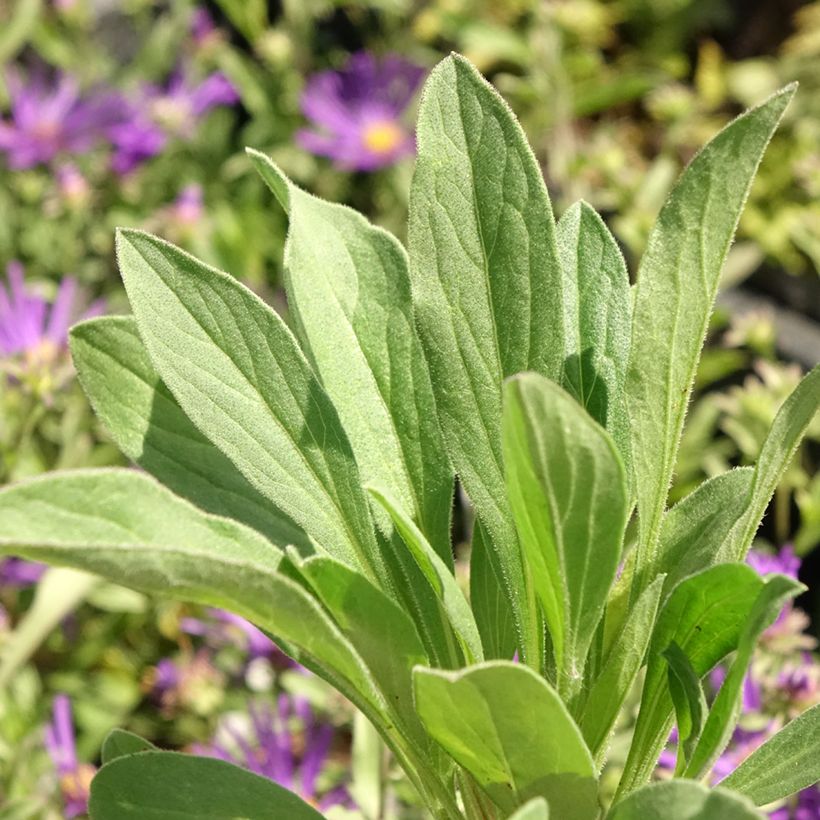

Flowering
Foliage
Plant habit
Botanical data
Aster
amellus
Veilchenkönigin - Violet Queen
Asteraceae
Italian Aster, European Michaelmas Daisy
Cultivar or hybrid
Other Asters
Planting and care
Plant Aster amellus 'Veilchenkönigin' in autumn or spring in ordinary, loose, moist but well-drained soil, even limestone. It appreciates a sunny exposure but tolerates partial shade where it will have a slightly looser habit, with the stems tending to bend. Avoid strong winds. Once established, it is best not to move it as it does not appreciate changes. In borders, maintain a spacing of at least 50cm (20in) between plants. Water in case of heatwaves, and you can also mulch your borders from June onwards to keep the base of your perennials cool. Aster amellus is not susceptible to powdery mildew. You can pinch out the stems in the middle of summer to promote a beautiful flowering. Cut back dried stems in autumn or late winter. Divide the clumps every 3-4 years to maintain their vigour and do not replant the divisions in the same place. This aster is not invasive.
Planting period
Intended location
Care
-
, onOrder confirmed
Reply from on Promesse de fleurs
Summer flowering perennials
Haven't found what you were looking for?
Hardiness is the lowest winter temperature a plant can endure without suffering serious damage or even dying. However, hardiness is affected by location (a sheltered area, such as a patio), protection (winter cover) and soil type (hardiness is improved by well-drained soil).

Photo Sharing Terms & Conditions
In order to encourage gardeners to interact and share their experiences, Promesse de fleurs offers various media enabling content to be uploaded onto its Site - in particular via the ‘Photo sharing’ module.
The User agrees to refrain from:
- Posting any content that is illegal, prejudicial, insulting, racist, inciteful to hatred, revisionist, contrary to public decency, that infringes on privacy or on the privacy rights of third parties, in particular the publicity rights of persons and goods, intellectual property rights, or the right to privacy.
- Submitting content on behalf of a third party;
- Impersonate the identity of a third party and/or publish any personal information about a third party;
In general, the User undertakes to refrain from any unethical behaviour.
All Content (in particular text, comments, files, images, photos, videos, creative works, etc.), which may be subject to property or intellectual property rights, image or other private rights, shall remain the property of the User, subject to the limited rights granted by the terms of the licence granted by Promesse de fleurs as stated below. Users are at liberty to publish or not to publish such Content on the Site, notably via the ‘Photo Sharing’ facility, and accept that this Content shall be made public and freely accessible, notably on the Internet.
Users further acknowledge, undertake to have ,and guarantee that they hold all necessary rights and permissions to publish such material on the Site, in particular with regard to the legislation in force pertaining to any privacy, property, intellectual property, image, or contractual rights, or rights of any other nature. By publishing such Content on the Site, Users acknowledge accepting full liability as publishers of the Content within the meaning of the law, and grant Promesse de fleurs, free of charge, an inclusive, worldwide licence for the said Content for the entire duration of its publication, including all reproduction, representation, up/downloading, displaying, performing, transmission, and storage rights.
Users also grant permission for their name to be linked to the Content and accept that this link may not always be made available.
By engaging in posting material, Users consent to their Content becoming automatically accessible on the Internet, in particular on other sites and/or blogs and/or web pages of the Promesse de fleurs site, including in particular social pages and the Promesse de fleurs catalogue.
Users may secure the removal of entrusted content free of charge by issuing a simple request via our contact form.
The flowering period indicated on our website applies to countries and regions located in USDA zone 8 (France, the United Kingdom, Ireland, the Netherlands, etc.)
It will vary according to where you live:
- In zones 9 to 10 (Italy, Spain, Greece, etc.), flowering will occur about 2 to 4 weeks earlier.
- In zones 6 to 7 (Germany, Poland, Slovenia, and lower mountainous regions), flowering will be delayed by 2 to 3 weeks.
- In zone 5 (Central Europe, Scandinavia), blooming will be delayed by 3 to 5 weeks.
In temperate climates, pruning of spring-flowering shrubs (forsythia, spireas, etc.) should be done just after flowering.
Pruning of summer-flowering shrubs (Indian Lilac, Perovskia, etc.) can be done in winter or spring.
In cold regions as well as with frost-sensitive plants, avoid pruning too early when severe frosts may still occur.
The planting period indicated on our website applies to countries and regions located in USDA zone 8 (France, United Kingdom, Ireland, Netherlands).
It will vary according to where you live:
- In Mediterranean zones (Marseille, Madrid, Milan, etc.), autumn and winter are the best planting periods.
- In continental zones (Strasbourg, Munich, Vienna, etc.), delay planting by 2 to 3 weeks in spring and bring it forward by 2 to 4 weeks in autumn.
- In mountainous regions (the Alps, Pyrenees, Carpathians, etc.), it is best to plant in late spring (May-June) or late summer (August-September).
The harvesting period indicated on our website applies to countries and regions in USDA zone 8 (France, England, Ireland, the Netherlands).
In colder areas (Scandinavia, Poland, Austria...) fruit and vegetable harvests are likely to be delayed by 3-4 weeks.
In warmer areas (Italy, Spain, Greece, etc.), harvesting will probably take place earlier, depending on weather conditions.
The sowing periods indicated on our website apply to countries and regions within USDA Zone 8 (France, UK, Ireland, Netherlands).
In colder areas (Scandinavia, Poland, Austria...), delay any outdoor sowing by 3-4 weeks, or sow under glass.
In warmer climes (Italy, Spain, Greece, etc.), bring outdoor sowing forward by a few weeks.



































